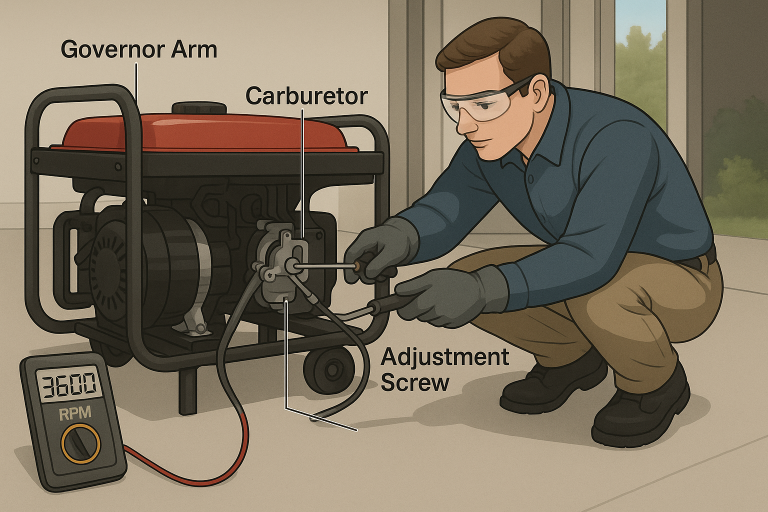Generac versus Honda Generators: Which Is Right for You?
In an era of increasing power outages driven by extreme weather events, aging utility infrastructure, and rising energy demands, generators have transitioned from luxury gadgets to essential tools. Whether you’re safeguarding your home against storms, powering a job site, running critical medical equipment, or simply enjoying off-grid living and outdoor adventures, a reliable generator offers peace of mind and uninterrupted energy when it matters most.
Generac vs. Honda: Two Titans of Power
- Generac has become synonymous with whole-home standby systems: high-capacity, permanently installed units that automatically kick in the moment grid power fails. Their broad model lineup—including dual-fuel and natural-gas options—offers flexibility and scalability for anything from a small cottage to a large residence.
- Honda, on the other hand, is the gold standard for portable power. Renowned for ultra-quiet operation, fuel-sipping efficiency, and exceptionally clean sine-wave output, Honda inverter generators are the go-to for campers, food trucks, tailgaters, and professionals running sensitive electronics or light power tools on the go.
This guide takes an in-depth look at how Generac and Honda compare across every critical dimension—power output, noise levels, fuel options, runtime, pricing, installation, maintenance, warranty, environmental impact, and real-world user experience—to help you select the right generator for your unique needs.
Key Features to Consider
1. Power Output (Wattage)
- Rated (Running) Watts: The continuous power a generator can supply. Use this to size your essential loads: fridge (~700 W), lights (~200 W), sump pump (~1,000 W).
- Surge (Starting) Watts: The brief extra power required to start motor-driven appliances. Always choose a model whose surge rating comfortably exceeds your highest single startup draw.
| Brand | Max Rated Power | Max Surge Power |
|---|---|---|
| Generac | Up to 24 kW | Typically +10–20% above |
| Honda | Up to 7 kW | ~1.2× rated (inverter-boost) |
2. Fuel Type & Flexibility
- Gasoline: Readily available; best for portable units.
- Propane: Cleaner, longer shelf life; requires separate tank.
- Natural Gas: Unlimited supply if plumbed; ideal for standby systems.
- Dual-Fuel: Switch between propane and gasoline on the fly.
| Brand | Gasoline | Propane | Natural Gas | Dual-Fuel |
|---|---|---|---|---|
| Generac | ✓ | ✓ | ✓ | ✓ |
| Honda | ✓ | ✗ | ✗ | ✗ |
3. Noise Levels
- Measured in decibels (dB)—each 10 dB increase sounds twice as loud.
- Generac standby units: 65–75 dB (roughly a household vacuum)
- Honda inverter (EU Series): 48–57 dB (quieter than normal conversation)
4. Portability & Installation
- Generac standby: Permanently mounted; requires professional installation; 250–500 lbs.
- Honda portable: Lightweight, wheel-handle design; 47–200 lbs; plug-and-play.
5. Runtime & Fuel Efficiency
- Generac: Natural gas models can run indefinitely; gasoline models typically 12–24 hours per tank.
- Honda: Eco-Throttle™ tech provides up to 8.1 hrs at 25% load on 0.95 gal.
6. Price & Financing
- Generac: Portable from $600; standby units $3,000–$10,000 installed (financing options available).
- Honda: EU2200i MSRP $1,099; EU7000iS ~$4,000.
7. Warranty & Service
- Generac: 2–5 year limited warranty; nationwide network but service quality varies.
- Honda: 3-year residential warranty; strong customer support reputation.
8. Electrical Output Quality
- Honda Inverter Technology: Clean sine-wave power for sensitive devices.
- Generac Alternators: Great for heavy-duty use; line conditioners may be needed for electronics.
Brand Deep Dive
Generac: The Home-Backup Leader
- Founded: 1959
- Specialty: Whole-house standby generators
- Flagship Models:
- Guardian 24kW
- GP3500iO
Pros
- True whole-home coverage up to 24 kW
- Multiple fuel options
- Automatic operation
Cons
- Louder portable units
- Higher installation costs
- Service quality varies by region
Honda: The Portable Powerhouse
- Founded: 1948
- Specialty: Quiet, reliable inverter generators
- Flagship Models:
- EU2200i
- EU7000iS
Pros
- Whisper-quiet operation
- Fuel efficient and clean output
- Lightweight, portable
Cons
- High cost per watt
- No propane or natural gas support
Head-to-Head Applications
- Whole-House Backup: Generac is ideal; Honda can’t match capacity.
- Camping, Tailgating & RVing: Honda EU2200i is the quiet champ.
- Job Sites & Workshops: Generac handles heavy loads; Honda is great for sensitive tools.
- Emergency & Medical: Both work—Generac for home, Honda for remote portability.
Installation, Maintenance & Safety
Installation
- Standby Units: Concrete pad, transfer switch, gas line, permits.
- Portables: Level surface, fuel, oil—no permit needed.
Maintenance
- Generac: Oil changes every 200 hrs, biannual checks, test cycles.
- Honda: Oil every 6 months or 100 hrs; very low maintenance.
Safety Tips
- Never run indoors—carbon monoxide risk.
- Use CO detectors near living spaces.
- Maintain 10-ft clearance when operating.
Environmental & Regulatory Considerations
- Emissions Compliance: Honda is CARB and EPA certified; Generac varies by model.
- Noise Ordinances: Honda often passes low-dB regulations; Generac may not.
Real-World User Experience
| Category | Generac | Honda |
|---|---|---|
| Ease of Use | Automatic, Wi-Fi monitoring | Simple controls, Bluetooth app |
| Reliability | 24/7 always-on protection | Decades of dependable performance |
| Customer Service | Varies by dealer | Excellent reputation |
| Resale Value | Moderate | High |
Final Verdict & Recommendations
Choose Generac If…
- You need automatic, whole-house backup.
- You want dual-fuel or natural gas options.
- You prioritize scalability and value.
Choose Honda If…
- You need quiet, portable, fuel-efficient power.
- You run sensitive electronics and need mobility.
- You want low maintenance and top support.
Pro Tips
- RV users: Parallel two EU2200i units for 4,400 W ultra-quiet power.
- Storm prep: Don’t forget permits and maintenance in your budget.
- Save 30% by buying certified refurbished models from trusted dealers.
With a clear understanding of capacities, features, and trade-offs, you’re now equipped to choose the generator that will keep your lights on – and your life running – no matter what tomorrow brings.


